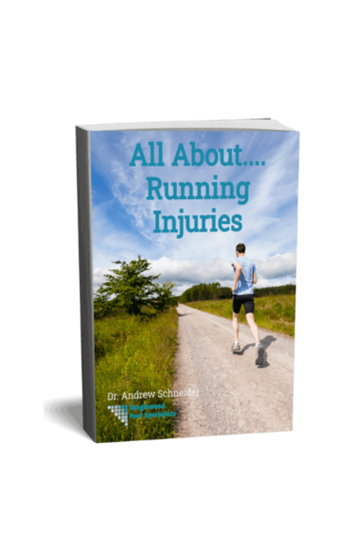
Every runner has unique features of their running gait. Some are heel-strikers and some strike on their midfoot. Some have a long stride and others short. While every running gait has similarities, there is, generally speaking, no right or wrong way to run.
Even so, there are ways to work with your gait and sneakers to boost your running efficiency. At the same time, you can lower your injury risk. Sound good? Then just keep reading for tips.
The Great Heel Strike Debate: Does it Matter?
If you have a heel strike, it means that your heel is the first part of your foot to hit the ground. And a forefoot strike is when you land on the front of your foot first. In the running community, people swear that your foot strike is the biggest predictor of your injury risk. But it's just not true.
Recent studies prove just the opposite. You can run safely with any kind of heel strike. But you can't overtrain, or skip out on rest days. Because running too far, too fast, or too many days in a row leads to overuse injuries. And that's the wrong way to run.
Shoe Choices: What's the Right Running Sneaker
As a running podiatrist in Houston, TX, I'm always getting asked about the best shoes to wear when running. Often, this boils down to how much padding prevents injury.
Some runners swear by maximalist shoes, like the Hoka One One. The theory? All that extra support and padding absorbs the shock of your runs. And that can prevent injury.
But the reality? A maximalist sneaker can change your posture, which can get you off balance and negatively impact your stride. As such, maximalist shoes may be great for walking. But they probably aren't the best choice for running.
Now, the same can be true for minimalist sneakers. Without any padding, enthusiasts say these shoes mimic your body's natural gait. Unfortunately, without any padding, minimalist shoes offer no protection from the stress of running. And that can leave you with foot pain. Or a higher risk for running injuries.
So, is there a right or wrong running shoe? The best sneaker is the one that feels great on your foot right away. Some sneaker designs may be better suited for your foot type. But the key is to feel comfortable. And, if necessary, to increase the comfort and support by adding a custom orthotic.
Is there a Right Or Wrong Way to Run: Setting a Schedule ![couple running on mountain road]()
If you're training for a big race, like a marathon or triathlon, you'll have to build up your weekly mileage. And it turns out there's a right way to do this.
First, don't increase your miles every week. Even if you limit mileage increases to 10%, weekly increases increase your injury risk. So, what can you do to stay safe?
Go for very gradual mileage increases. Make sure your body really adjusts to and feels comfortable with your new distance goals. Then, try running a bit farther for your next few weeks of training. Always drop back down if your body protests too much. And never forget about rest days and cross-training. Because those two measures will also help prevent running injuries.
Is there a Perfect Running Posture?
I already took down one big running theory, that your heel strike affects your injury risk. But there's a new gait theory in town that seems to hold true. It goes like this: the angle of your trunk impacts your injury risk.
What do I mean by that? Your body trunk puts the heaviest load on your feet when you run. And it's flexion--or how far forward or back it leans--impacts the pressure on your feet.
In other words, your posture relates directly to your running injury risk. Lean too far forward while you train? That adds pounds of pressure to your feet. And it dramatically increases your running risk.
But the problem goes further. The more you lean forward, the shorter your running stride. As a result, you take many more steps to cover the same distance. And, since total training distance also increases your injury risk, that's a problem.
So, is there a right or wrong way to run when it comes to posture? Absolutely! And the right choice is to stand up straight while you train. That will put less pressure on your feet. It will also maximize your stride. And, in combination with the other tips I've shared in this answer, it can lower your overall risk for injury.
Running the Right Way in Houston, TX
By now, I hope you see that there's not one right way to run for everyone. But there is a right way to run for your own body. And it's important to figure that out early in your running career.
First, don't worry about the rumors or literature on gait. Instead, find a running gait that is most proper for you. As I said, many people get injured either by mimicking how others run or by taking advice from others on how they should be running.
A better choice? Get a gait analysis and see if you need any physical support for your natural stride. Then, if you need more help? We are fortunate to have many running coaches in Houston. And I'm happy to introduce you to one to get you started on the right path.
Now, I want you to also forget about picking a hyped up sneaker. Just find something that feels good on your feet every time you wear it. Replace it every three to six months. (Or sooner if you're logging lots of weekly miles.) And, if you regularly wear an orthotic, make sure to use that orthotic when you run, unless you invest in a second running orthotic.
Remember, no runner should be in pain. Foot, ankle, knee, and leg pain can often be resolved by making a small adjustment in your gait, running surface, or shoes. Your Houston running podiatrist can assess your needs and make the recommendations to get you out of pain quickly.





















